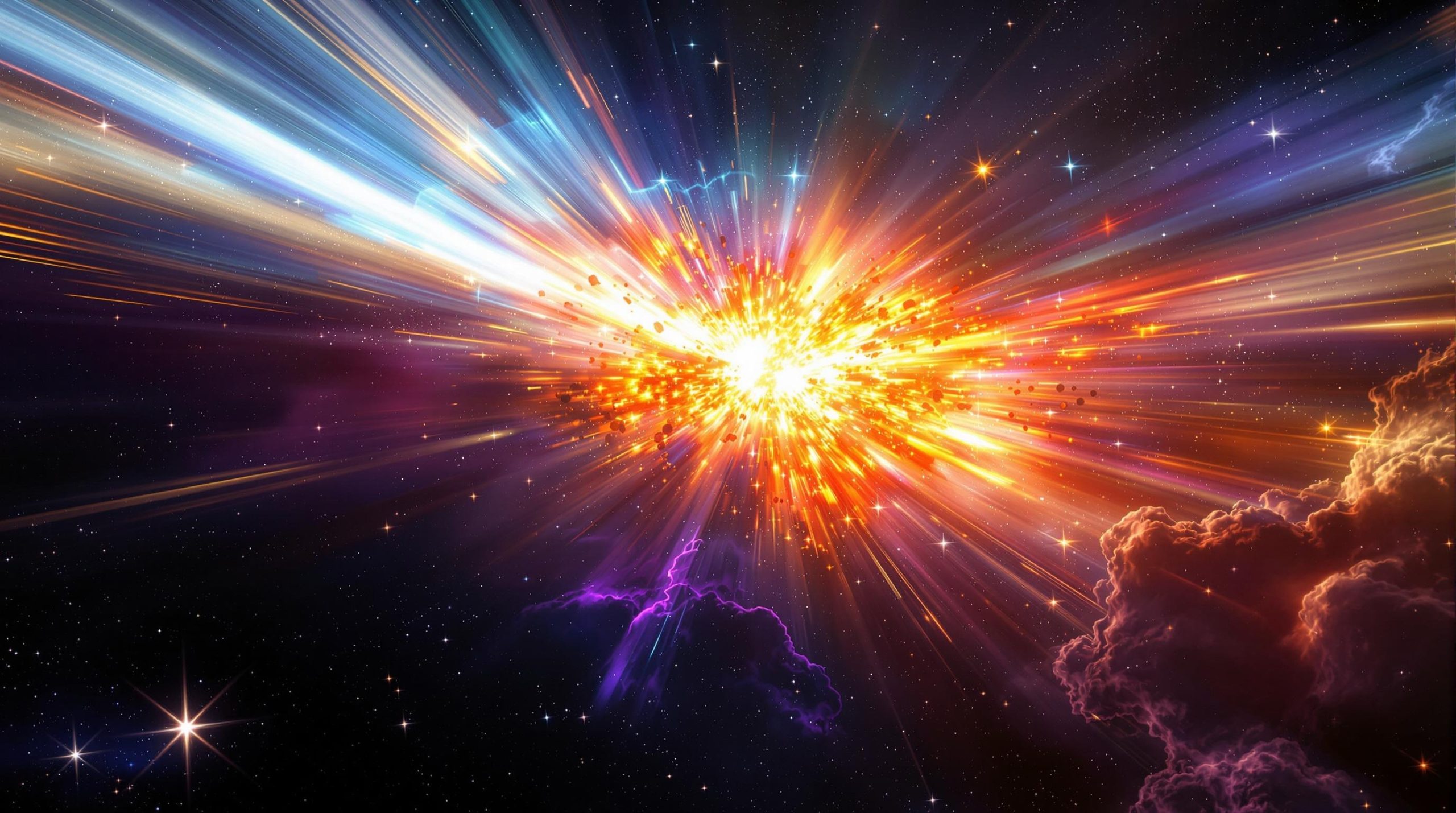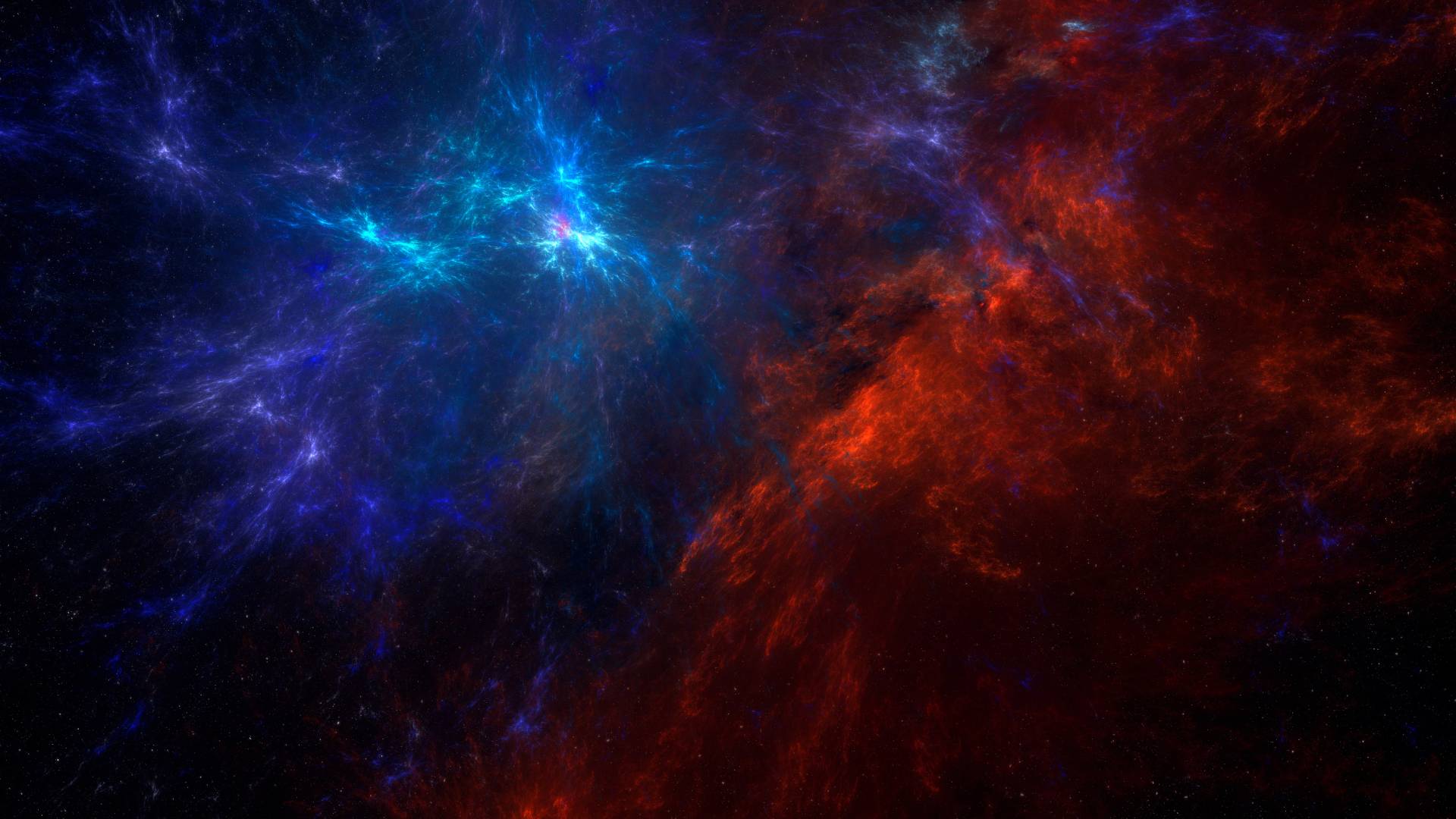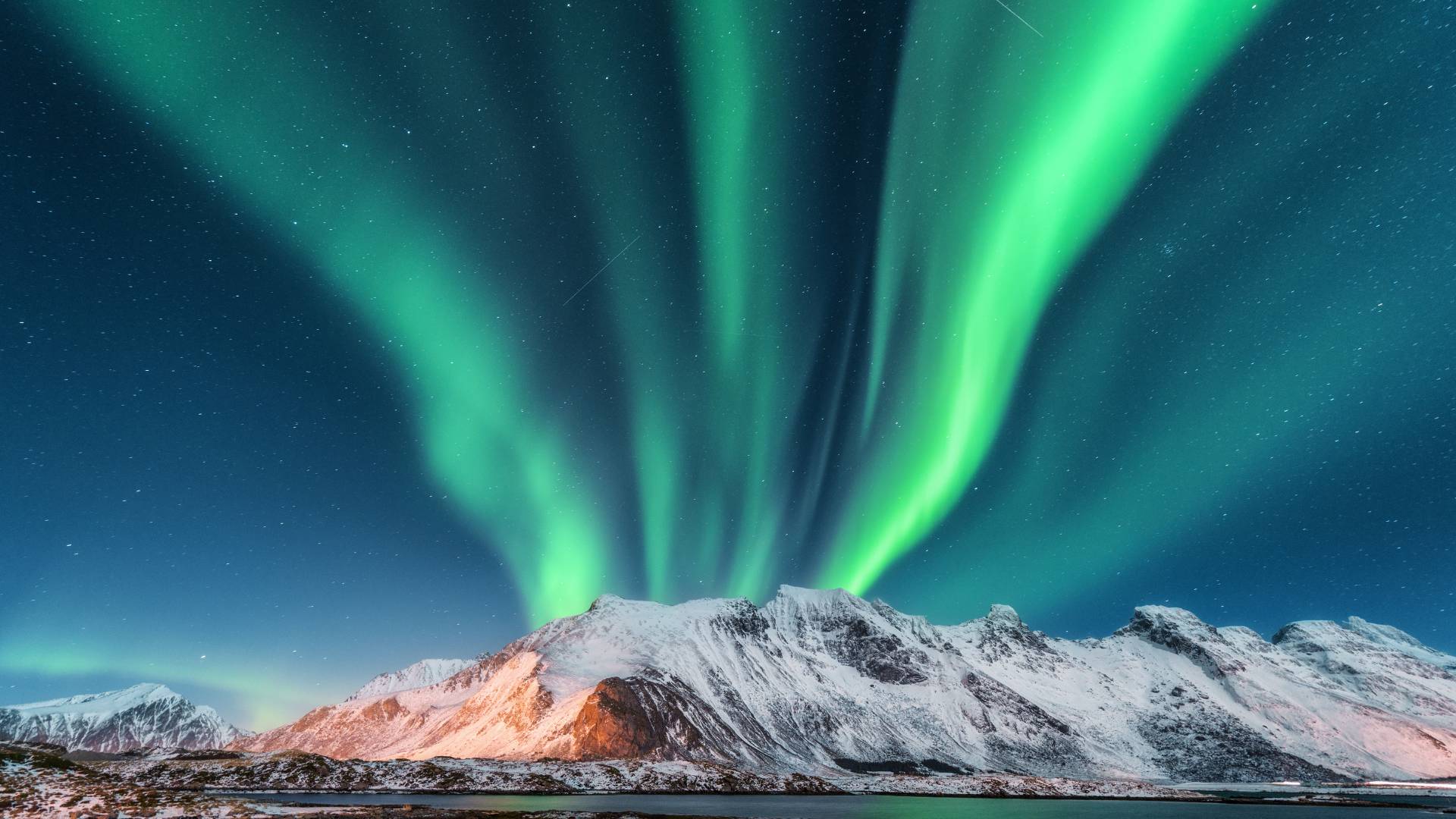Gamma-ray bursts (GRBs) are among the most powerful and mysterious phenomena in the universe. These fleeting yet incredibly intense explosions of gamma radiation can outshine entire galaxies in mere seconds, releasing more energy than the Sun will emit over its entire 10-billion-year lifespan. GRBs have fascinated astronomers and astrophysicists since their discovery in the 1960s, prompting ongoing research into their origins, mechanisms, and implications for understanding the cosmos.
In this article, we’ll explore what gamma-ray bursts are, their causes, types, detection, and the profound impact they have on our understanding of the universe. stay with Spaeyv.com
What Are Gamma-Ray Bursts?
Gamma-ray bursts are intense flashes of gamma radiation, the highest-energy form of light, originating from deep space. They typically last from a fraction of a second to several minutes and are followed by an afterglow of lower-energy radiation, including X-rays, ultraviolet light, and visible light.
GRBs are classified as the most energetic explosions in the universe, believed to occur billions of light-years away. These bursts can briefly release as much energy as the Sun would in its entire lifetime.
How Were Gamma-Ray Bursts Discovered?
The first detection of GRBs occurred during the Cold War in the 1960s. The United States launched a series of satellites called the Vela satellites to monitor compliance with the Nuclear Test Ban Treaty, which banned nuclear tests in space. These satellites were equipped with gamma-ray detectors to identify nuclear explosions.
To their surprise, scientists detected bursts of gamma radiation that were not linked to Earth or the Sun. Instead, they came from deep space. This discovery, kept secret for several years, marked the beginning of GRB research.
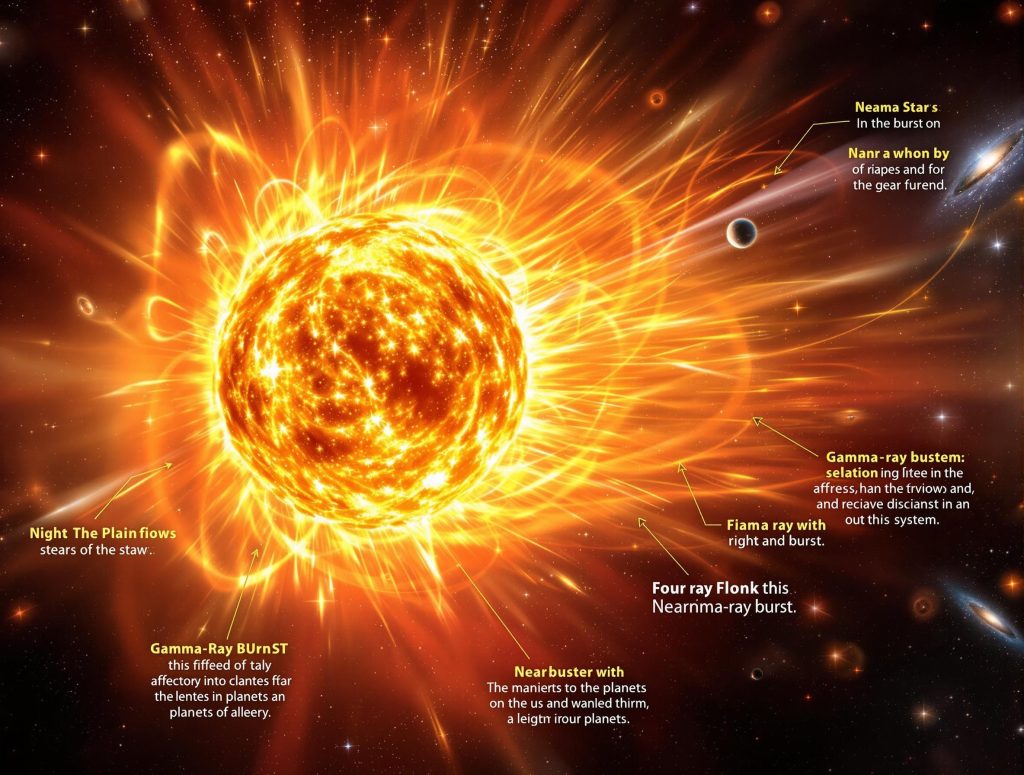
What Causes Gamma-Ray Bursts?
Scientists have identified two primary types of gamma-ray bursts, each with different causes:
1. Long Gamma-Ray Bursts
- Duration: Typically last from 2 seconds to several minutes.
- Cause: Long GRBs are associated with the deaths of massive stars. When a star with a mass at least 10 times that of the Sun exhausts its nuclear fuel, its core collapses, forming a black hole or neutron star. This collapse triggers a supernova or hypernova explosion, accompanied by jets of gamma radiation shooting out at nearly the speed of light.
- Associated Events: These GRBs often coincide with supernovae, making them a key clue in identifying their origin.
2. Short Gamma-Ray Bursts
- Duration: Last less than 2 seconds, sometimes only milliseconds.
- Cause: Short GRBs are believed to result from the merger of two compact objects, such as neutron stars or a neutron star and a black hole. These mergers generate gravitational waves and an intense burst of gamma radiation.
- Associated Events: Detected alongside gravitational waves, as observed by instruments like LIGO and Virgo.
Types of Gamma-Ray Bursts
While long and short GRBs are the primary classifications, other subcategories and phenomena are associated with gamma-ray bursts:
- Soft Gamma Repeaters (SGRs): These are bursts of gamma rays from highly magnetized neutron stars, known as magnetars. Unlike typical GRBs, they are recurrent and less energetic.
- X-Ray Flashes (XRFs): These are events similar to GRBs but with a higher proportion of X-ray emission compared to gamma rays.
You can also read : What Is the Kármán line and Why Does It Matter?
How Do We Detect Gamma-Ray Bursts?
Detecting GRBs is challenging due to their fleeting nature and unpredictable occurrence. However, astronomers have developed sophisticated tools and techniques:
1. Space-Based Telescopes
- Swift Observatory: Launched in 2004, Swift can quickly detect GRBs, pinpoint their locations, and observe their afterglows.
- Fermi Gamma-ray Space Telescope: Capable of detecting high-energy gamma rays and studying the physics of GRBs.
- Compton Gamma Ray Observatory (CGRO): An earlier mission that significantly contributed to GRB science.
2. Ground-Based Telescopes
After a GRB is detected by space telescopes, ground-based observatories study the afterglow in optical, infrared, and radio wavelengths. These observations help determine the distance and origin of the burst.
3. Gravitational Wave Observatories
Short GRBs associated with neutron star mergers are also detected through gravitational waves by facilities like LIGO and Virgo.
The Importance of Gamma-Ray Bursts in Astronomy
Gamma-ray bursts are more than just cosmic fireworks; they have profound implications for our understanding of the universe:
1. Probing the Early Universe
GRBs occur at great distances, often billions of light-years away, meaning the light we observe was emitted when the universe was young. Studying these bursts helps scientists understand the early stages of star formation and galaxy evolution.
2. Testing Physics in Extreme Environments
The conditions that produce GRBs involve extreme gravity, density, and magnetic fields. These environments allow scientists to test theories of high-energy physics and general relativity.
3. Identifying Cosmic Events
GRBs are often linked to dramatic cosmic events like supernovae and neutron star mergers. By studying GRBs, astronomers gain insights into the life cycles of stars and the formation of black holes.
4. Advancing Multimessenger Astronomy
The detection of a short GRB alongside gravitational waves in 2017 marked the beginning of multimessenger astronomy, where different types of signals (light, gravitational waves) are used to study the same event.
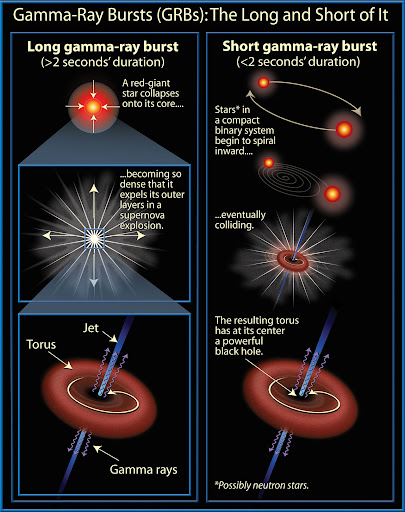
Challenges in Gamma-Ray Burst Research
Despite significant advancements, GRB research faces several challenges:
- Fleeting Nature: GRBs last only seconds or minutes, requiring fast detection and response systems.
- Distance: The vast distances involved make it difficult to study GRBs in detail or determine their exact locations.
- Theoretical Uncertainty: While the origins of most GRBs are understood, some events remain enigmatic, requiring further theoretical and observational research.
Could Gamma-Ray Bursts Affect Earth?
A sufficiently close gamma-ray burst could have devastating effects on Earth by depleting the ozone layer and exposing the planet to harmful ultraviolet radiation. Fortunately, such an event is extremely unlikely, as most GRBs occur billions of light-years away.
Conclusion
Gamma-ray bursts are among the most energetic and enigmatic phenomena in the universe. These fleeting explosions shed light on the life and death of stars, the formation of black holes, and the behavior of matter in extreme conditions. By studying GRBs, scientists continue to unlock the secrets of the cosmos, advancing our understanding of the universe’s most powerful events.
As technology improves, the mysteries of gamma-ray bursts will continue to unravel, offering deeper insights into the nature of our universe and the cosmic forces that shape it.
NASA – Gamma-Ray Bursts
https://www.nasa.gov/mission_pages/swift/bursts
NASA’s page on gamma-ray bursts provides detailed information on their discovery, classification, and ongoing research, including data from missions like Swift and Fermi.

